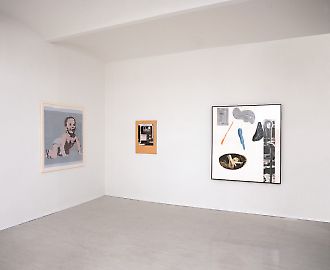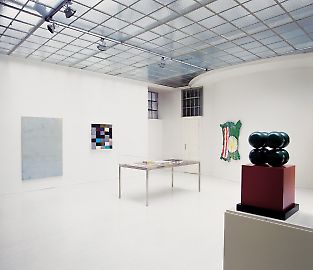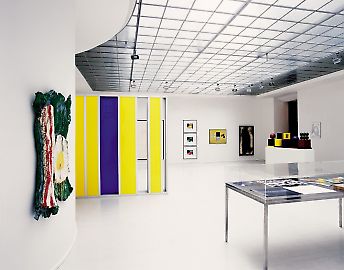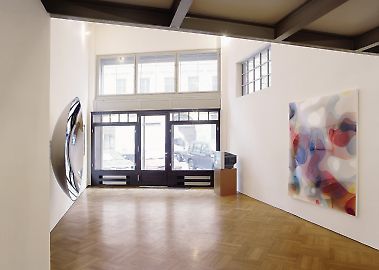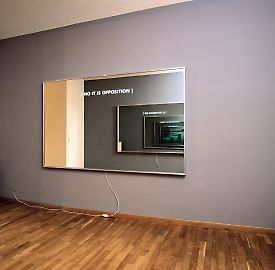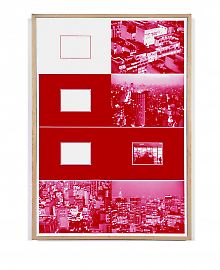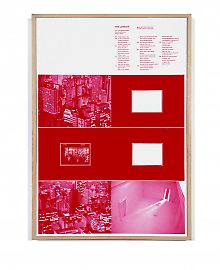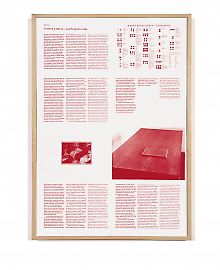Re-Production 2 -- curated by Thomas Locher
The term “reproduction”, a derivative of “production,” has been used only recently in science and philosophy. The term has been in use in economic theory ever since Marx introduced it. When we analyze the properties of mass produced objects we find that they are not identical to each other in the strict sense of the term. Therefore, the notion of reproduction is a necessary component of the analysis of the process of mass production. Reproduction is not only a repetition of production but also a self-reflexive production, a production made from products. Or so system theory claims
Current strategies in the production of artworks – and this has been true since the beginning of the twentieth century – make essential use of industrial techniques of reproduction; existing images and texts are used reproductively. Most often than not they are photomechanically reproduced and/or altered using digital storage techniques. It is important to note, though, that art objects are different from ordinary industrial ones. The artwork is a product which is supposed to remain for a long time; the industrial object, on the other hand, is ephemeral.
Ever since Duchamp’s readymade, the use of preexisting material has been a universal paradigm. That does not, however, mean that all available material is capable of reproduction in a manner which keeps its meaning intact. In the realm of secular commodity objects and of the secular images of the mass media, one must choose very carefully. The objects or illustrations that are chosen to be reproduced or placed into another context are rife with a hidden, unconscious value. This value should be retained when the object is transformed into another cultural context. (e.g., a museum) The artist, who is attributed with special talents, must identify this unconscious element and make sure that it survives the transformation. This procedure, a fictional construction, can be successfully carried out because the commodity object has already achieved the state of a natural object. Indeed, an exact boundary between nature and thing, between image and subject is impossible to draw.
From the point of view of communication theory many of the artistic strategies which rely on reproduction may be described, abstractly, as the non standard use of signals; recognizable signals are used in order to transmit new messages. The non standard use of signals constitute a reinterpretation of the signal; it requires a change in the code. However, when the code is altered the message might be misunderstood. Another danger is that the process of interpretation in accordance with the new code might require a long time and, consequently, the reception of the message might be delayed (Duchamp is a good example for these phenomena.). The effect of a delay might not be altogether disastrous. However, in the present-day economy, the commodity must be recognizable as such. Another way of sending non standard messages is to alter the code violently and abruptly in a quasi revolutionary situation. This process, too, is a complicated one. So, the sender dispenses with unusual messages and sends the familiar. Fact: the receiver must in principle be able to recognize every possible message.
Reproductive technologies are not simply an enduring component of artistic production; it may be that the production of art does not exist outside the framework established by technology. Artistic production that wants to see itself as not reproductive is thus already contaminated by the reproductive element. Moreover, that an artifact has been reproduced is a necessary proof of its existence: For all practical purposes, if the artwork is not reproduced it does not exist at all. The presumption that the artifact loses its singular value in the process of reproduction has been reversed: only mass media reproduction assures the artwork of its place in the archives and warehouses of cultural memory (according to Boris Groys) and legitimizes its existence there. The archives, in their turn, make questions of value and meaning possible to answer. This fact, which is completely recognized in practice, has not been adequately analyzed in theory. The ideological reassessment of objects to artifacts, from secular pictorial quality to sublime visuality – all processes of acquisition, appropriation, and deconstruction of materials already archived elsewhere are processes that must be theorized further in order to be properly understood. The ultimate theory of production/reproduction has yet to be developed.
In essence, the production of art today is the transfer of objects from among various storage places: from one cultural context to another, from one warehouse to another. Back and forth
Thomas Locher


